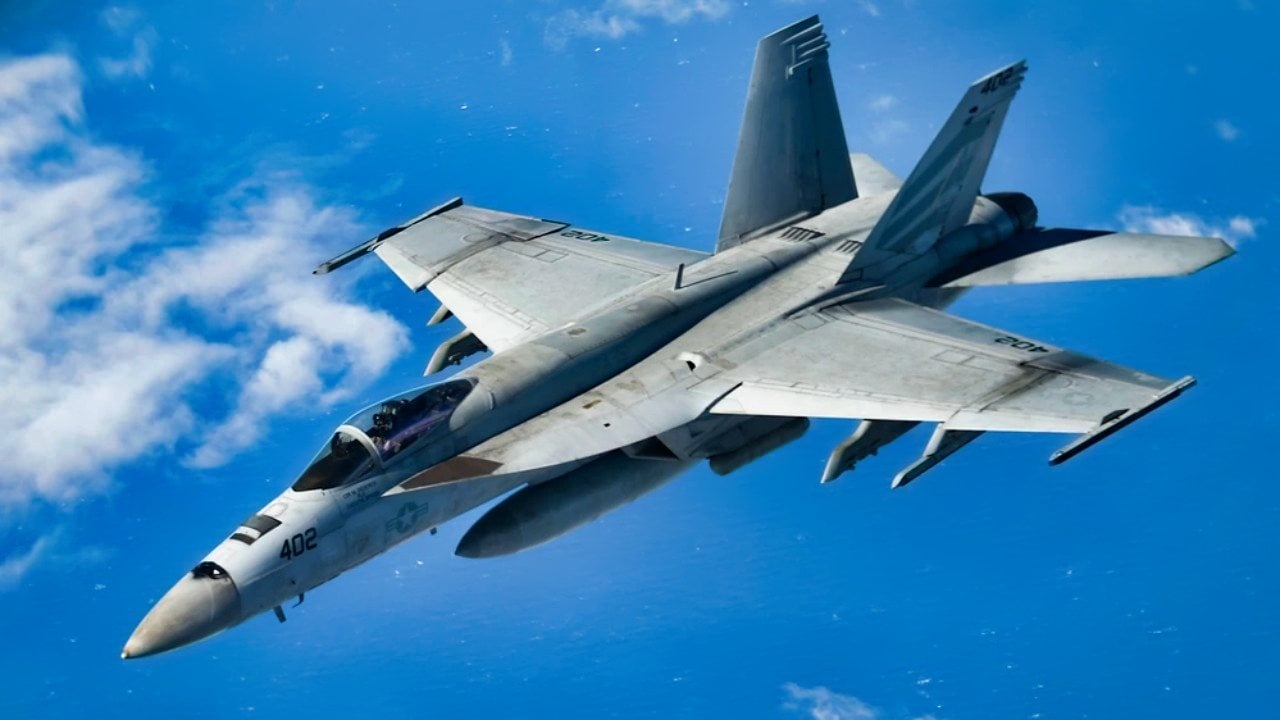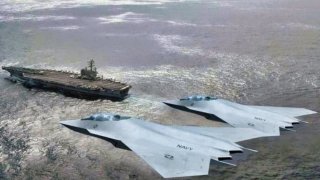F/A-XX: The Stealth Fighter Jet Set to Dominate the Skies
The U.S. Navy is advancing its aerial combat capabilities with the development of the F/A-XX, a sixth-generation stealth fighter jet, alongside the Air Force's Next Generation Air Dominance (NGAD) program.
Summary: The U.S. Navy is advancing its aerial combat capabilities with the development of the F/A-XX, a sixth-generation stealth fighter jet, alongside the Air Force's Next Generation Air Dominance (NGAD) program. The F/A-XX aims to integrate futuristic technologies including directed energy weapons and drone control. Essential for operations in the vast Indo-Pacific against advanced Chinese air defenses, this aircraft emphasizes long-range and stealth for penetrating enemy lines and achieving air superiority. Manufacturers Boeing, Lockheed Martin, and Northrop Grumman, with engine contenders Pratt & Whitney and GE Aerospace, are in the race to build this advanced fighter. The F/A-XX, continuing the legacy of multi-role combat aircraft like the F/A-18 Super Hornet, signifies the Navy's focus on versatile air-to-air and air-to-ground capabilities, intending to replace the Super Hornet while operating alongside the F-35C Lightning II.
F/A-XX: A Really Fighter Big Deal for the U.S. Navy
Although the F-35 Lighting II stealth fighter jet is still hot news, the U.S. military is already working on its future fighter jet capabilities.
At the same time that the Air Force is investing big in the designing and development of the Next Generation Air Dominance (NGAD) program, the Navy is working on its own sixth-generation stealth fighter jet: the F/A-XX.
The F/A-XX
As one of the most important ongoing projects in the entire U.S. military, much around the F/A-XX is classified.
But we can get a picture of the capabilities of the new aircraft from the occasional official statement and the intended role of the aircraft.
Some of the capabilities the Navy is looking for in the F/A-XX include directed energy weapons (lasers) and the ability to operate with and control swarms of unmanned aerial systems (drones).
In addition, the Navy is looking for an aircraft with the necessary long-range to operate over long expanses of water. The combination of the vast Indo-Pacific—the most likely area of combat operations for the F/A-XX—and the potent Chinese air defense systems means that U.S. aircraft carriers might not be able to approach close to their targets. As such, long-range capabilities are a must for the F/A-XX to be able to make a difference.
Moreover, the Navy is looking for a fighter jet with stealth capabilities that would be able to penetrate enemy air defenses, establish air superiority, and deliver its payload.
When it comes to the big manufacturing race, there are three contenders: Boeing, Lockheed Martin, and Northrup Grumman. The first two are the two aerospace defense giants vying for the Air Force’s NGAD. When it comes to the engine of the F/A-XX, Pratt & Whitney and GE Aerospace are the two competitors.
A Word About the F/A
When it comes to the F/A prefix, it stands for “fighter/attack.” One of the Navy’s two existing fighter jets, the F/A-18 Super Hornet, carries the F/A prefix to connote that the aircraft can credibly conduct both air-to-air and air-to-ground operations.
However, in reality, all modern fighter jets can conduct air-to-air and air-to-ground operations. Fighter jets like the F-16 Fighting Falcon, F-15 Eagle, F-22 Raptor, and F-35 Lighting II can clear the skies of enemy aircraft and bomb with precision targets on the ground.

Back in 1991, during the First Iraq War, a pair of Navy F/A-18 Hornets were flying on an air-to-ground mission when they had to switch to air-to-air posture midflight to shoot down two incoming Iraqi MiG-21 fighter jets. After the engagement, the Navy fighter jets switched back to an air-to-ground mode and proceeded with their original mission. They were the first fighter jets in modern aviation history to do so, giving credence to the F/A designation.

So, today, the F/A prefix largely serves as a Navy nomenclature thing. But the fact that the sixth-generation aircraft under development carries it tells us something about the capabilities the Navy is looking for in its new stealth fighter jet.
Equally important, through the F/A prefix, the Navy signals that the F/A-XX will be replacing the F/A-18 Super Hornet and not the F-35C Lighting II fifth-generation fighter jets.
About the Author
Stavros Atlamazoglou is a seasoned defense journalist specializing in special operations and a Hellenic Army veteran (national service with the 575th Marine Battalion and Army HQ). He holds a BA from Johns Hopkins University and an MA from the Johns Hopkins School of Advanced International Studies (SAIS). His work has been featured in Business Insider, Sandboxx, and SOFREP.


